5 great phaser pedals guitar players need to try
The past, present and future of your pedalboard's most psychedelic effect
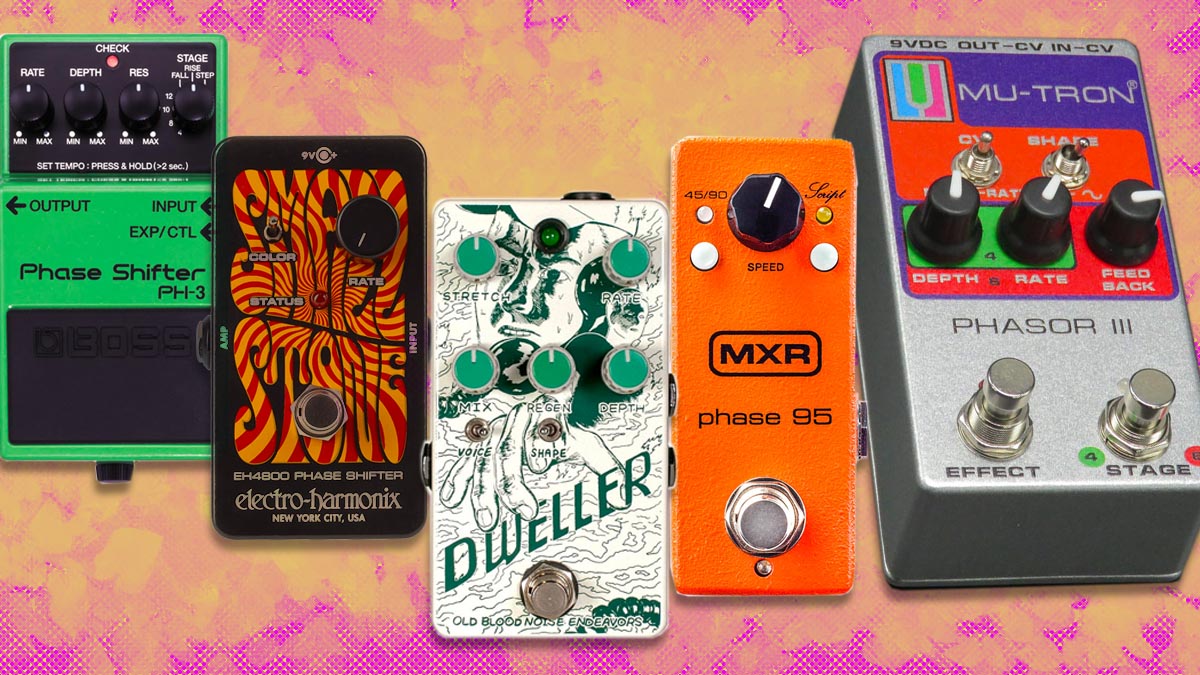
For an effects pedal that's so distinctive and unsubtle, phasers are still one of the most exciting pedals you can own. Despite the instantly recognisable effect, they sound completely different in different contexts.
Take, for example, the rush of tremolo-picked release in Russian Circles' Afrika - that's the same MXR phaser used by EVH on Eruption and Atomic Punk. Similarly, phase is a staple for Tame Impala's Kevin Parker, both on guitar and drums.
The same was true of the Mu-Tron Bi Phase on Smashing Pumpkins' Siamese Dream. In the Vieuphoria documentary, producer Butch Vig enthusiastically – and perhaps, a little jokingly, says, “we run everything through it – everything!“
With all these different guitarists making the effect their own, there's plenty of room for you to use it to shape your sound. The question is – which are the essentials to try? Don't worry, we've got you covered.
History in brief
Phasers as effects came out of a development of the flanger. Flanging was created by duplicating a signal and then slowing down one of the tape machines playing it back. Later, a low-frequency oscillator, or LFO was used to modulate the second signal instead.
The phaser uses an all-pass filter to change the phase relationship between different frequencies. When this is combined back with the dry signal, different overtones will be in or out of phase
The phaser takes this idea and shifts it around somewhat. Instead of delaying the signal to shift its frequency, the phaser uses an all-pass filter to change the phase relationship between different frequencies. When this is combined back with the dry signal, different overtones will be in or out of phase.
That's not all. As with flangers, and LFO is applied to the effected signal to move the filter, resulting in the 'movement' you hear the phaser creating. Finally, the effect is enhanced by using multiple filters in a chain, each of which is referred to as a 'stage'. The effect of cascading the filters is much greater harmonic content, and a more dramatic sound.
Get the MusicRadar Newsletter
Want all the hottest music and gear news, reviews, deals, features and more, direct to your inbox? Sign up here.
Furthermore, 'notches' occur between stages, canceling out audio and leaving peaks between them, which adds to the depth of the sound. Normally you can expect a notch every two stages, so a four-stage phaser will have two notches. Feeding back the output to the input creates resonance by emphasising the frequencies between notches. This is why sometimes you see feedback controls on phasers marked 'res' or 'resonance' instead of 'feedback'.
Because of the number of parts involved in making multiple filter stages, analogue phasers tended to be limited to 2, 4, 6, or maybe 8 stages at a push. Some digital options will go up to 32, but there's a little bit of diminishing returns beyond a certain number, in our view.
Maestro released the first phaser pedal in 1971, the MP1. Soon, this lone pedal, which had switches for speed rather than a continuous control knob, was joined by a number of competitors.
The Mu-Tron Bi Phase was a combination of the ideas and tech behind the phaser pedal and the Uni-Vibe, released in 1973. MXR's first production pedal was the Phase 90 in 1974, and EHX released the Small Stone the same year, which has been in production ever since.
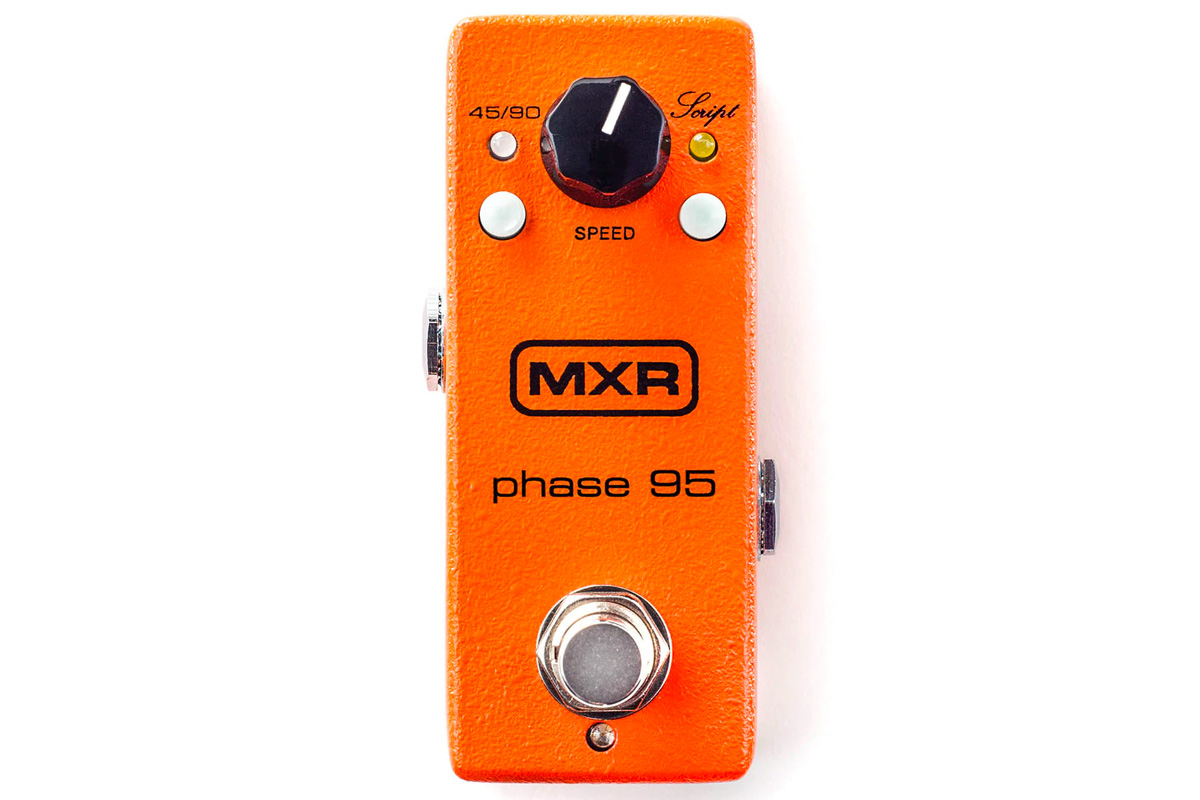
MXR Phase 95
Specifications
Reasons to buy
Reasons to avoid
The MXR Phase 95 is, strictly speaking, four phasers in one. Like the Small Stone, the original MXR Phase 90 was a fixed four-stage phaser. However, the Phase 45 is a two-stage design, making it substantially more subtle in practice, perhaps more similar to an amp vibrato than a phaser sound.
The Phase 90, meanwhile, came in two versions - with block lettering on the front, and with script lettering. Both had different circuitry internally.
The Phase 95, while compact, manages to cram the circuitry for both the Phase 45 and 90 into one box, as well as having a toggle switch for script and block-letter modes.
The script version doesn't have the feedback path of the block-letter Phase 90, resulting in a smoother phaser tone with less top end. It was the script version that was heavily used by Eddie Van Halen on their early albums, usually with the speed set very low.
Both the voicing in terms of number of stages, and the overall EQ response of the pedal are likely to determine which kind of vintage phaser is for you. When compared to the EHX options, the MXR is punchier in the mids, and therefore brighter, whereas the Small Stone is known for its darker timbre.
Alternatives: MXR EVH Phase 90, Vintage MXR Phase 100
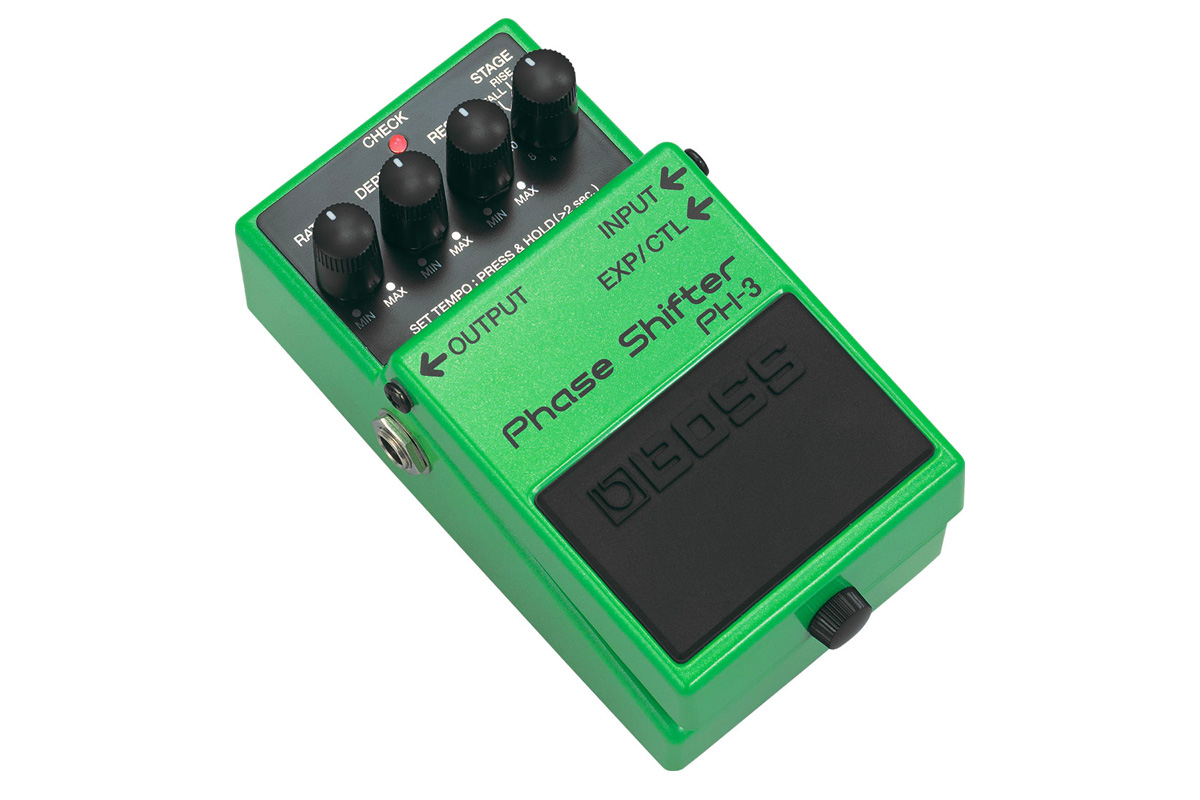
Boss PH-3 Phase Shifter
Specifications
Reasons to buy
Reasons to avoid
The BOSS PH-3 is a modern, digital option, and putting it up against analogue, vintage-voiced phasers results in it coming off worse. However, that's not where its strengths lie.
When gigging often, recording, or playing more experimental music, versatility is more useful in the long term than doing one sound well. Furthermore, a pedal that is deep, and sometimes surprising when you dig into an extra option or parameter, tends to stay on a live board longer.
The pedal has voicing for 4, 8, 10 and 12 stage phasing, and tap tempo to sync the rate. There's a cool step mode as well, and crucially, there's expression pedal input, meaning that the PH-3 can get you in the ballpark of Uni-Vibe tones as well.
Somewhat uniquely, it also has rise and fall modes which give the illusion of uni-directional phasing. They're best used as a sound-effect rather than something left on for a whole verse or chorus, but it's a useful tool to have in the box.
As it's BOSS, it's bulletproof, widely available, relatively affordable, and, in our opinion at least, somewhat underrated.
Alternatives: BOSS MD-500

Electro-Harmonix Small Stone Nano
Specifications
Reasons to buy
Reasons to avoid
As far as phasers go, there's none simpler than the EHX Small Stone. The reason that the pedal has endured is simple - it sounds great. The front panel is spartan; a two-position switch for voicing, and a single knob for rate.
Internally, the circuit hasn't changed much since its introduction in the 70s. It's a fixed four-stage analogue phaser.
What this means is that particularly at slower rate settings it nails that dramatic, vintage whoosh that you've heard on countless records. EHX do offer a six-stage version, the Bad Stone, but the sound is somewhat different.
In terms of vintage phasers, the EHX Small Stone is the darkest, which means it tends to sit pretty well in the mix.
The downside of the Small Stone is that, especially on vintage units, there tended to be a bit of a volume drop when engaged. Also, the footswitches were prone to breaking. Volume can still be a bit of an issue on the modern units, but reliability problems are a thing of the past.
Alternatives: EHX Bad Stone, EHX Mod Rex
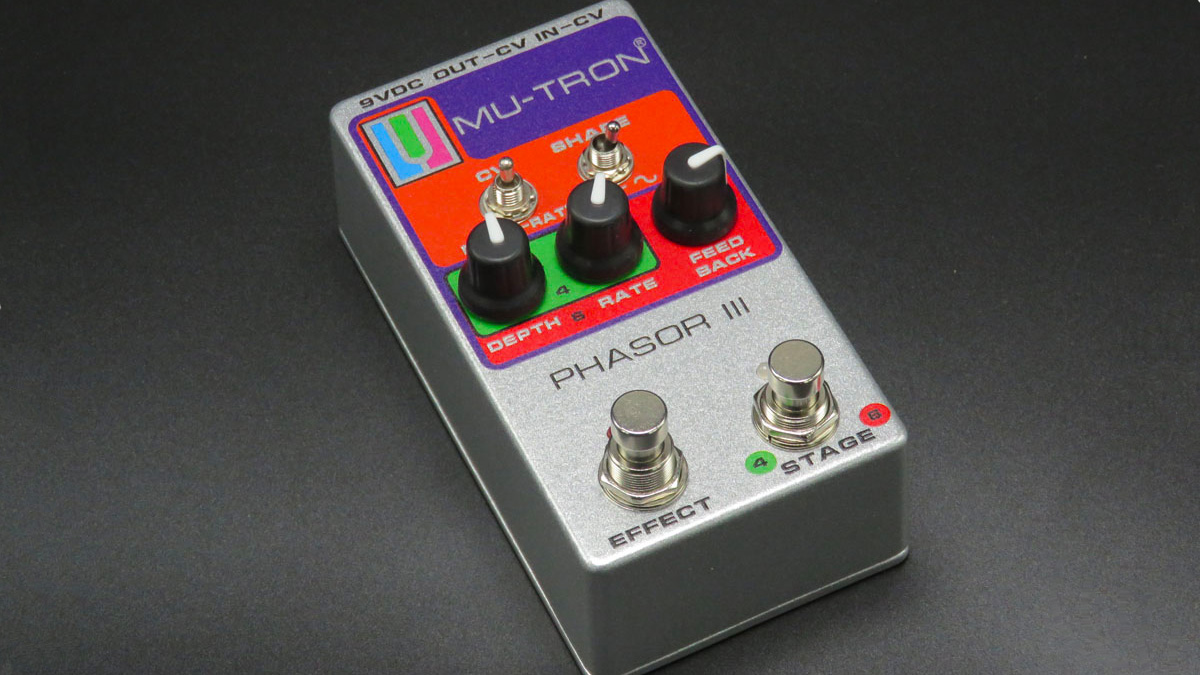
Mu-Tron Phasor III
Specifications
Reasons to buy
Reasons to avoid
No discussion of legendary phasers could be complete without the Mu-Tron Bi Phase. Released in 1973, it was a development of a Mu-Tron Phasor circuit that used two discrete phase circuits and LFOs. Like the Uni-Vibe it used lamps and photocells, resulting in poor tracking that became a part of its signature sound. Crucially, they added a feedback control to allow for more aggressive tones.
The Phasor III isn't a Bi Phase, unfortunately, but neither is it a simple Phasor II reissue. It has the same circuitry as one of the two stages of the Bi Phase, as well as a control voltage (CV) in and out. This means that two pedals can be linked together to achieve the Bi Phase sound.
It might seem a bit rich to require two pedals to get the Bi Phase sound. When you consider original units are in such demand that you'd be lucky to pay under fifteen hundred dollars for one, suddenly five hundred-odd bucks for something that doesn't also need maintenance isn't bad.
It's also worth remembering that, on its own, the Phasor II was a distinctive and dramatic phase effect, since it was the result of a pared-back Bi Phase. As a result, the huge, six-step rush of even a single Phasor III is not to be underestimated. It's worth noting that in four-step mode the feedback is fixed, so the effect is generally a bit more subtle.
Finally, as there's a CV-in that can be used to change the rate, it means that the Phasor III can create Uni-Vibe style effects.
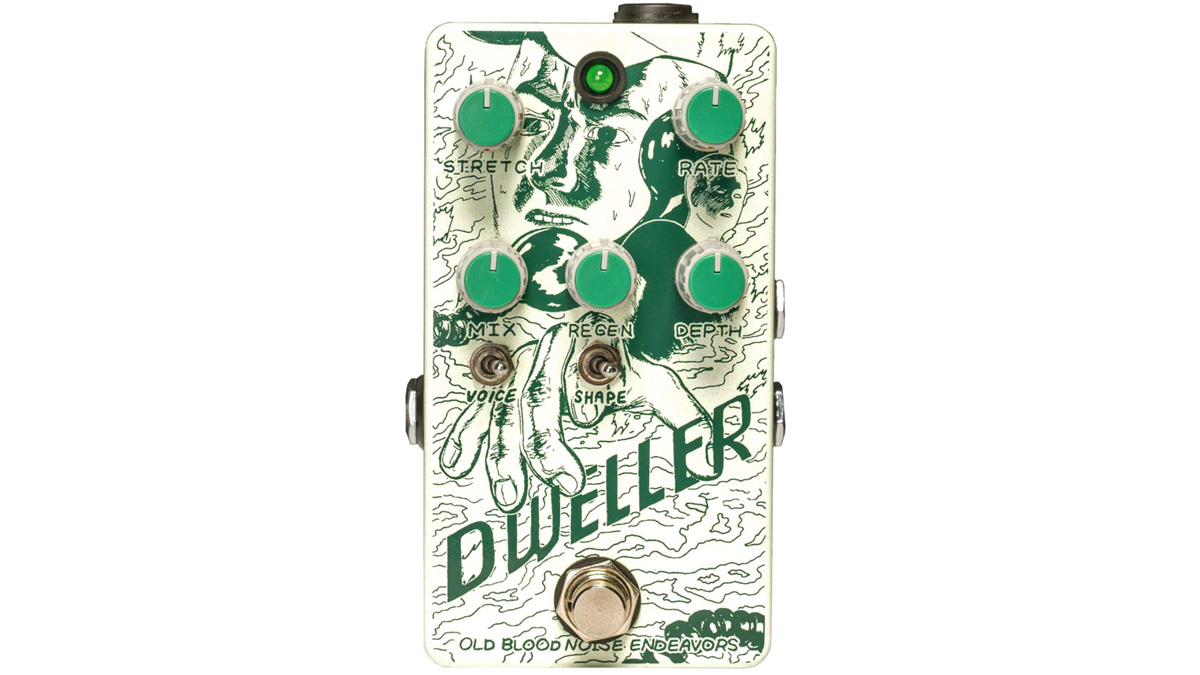
Old Blood Noise Endeavours Dweller
Specifications
Reasons to buy
Reasons to avoid
Old Blood Noise Endeavors can be called many things, but boring isn't one of them. Accordingly, the OBNE Dweller stretches the definition of phaser to the absolute extreme of what the term could possibly mean.
Strictly, it's not a phaser - rather it's a hybrid of delay and phase. The ability to loop and repeat the output, as well as time stretch the delay time inside each phaser stage means that it can generate sounds that fall wildly outside what you might think of as delay or phaser.
It's got a four and eight stage phaser voice, as well as three wave shapes - sine, triangle and random step. We've always found random steps to be particularly good fun, so combined with the huge array of other parameters on offer here, the Dweller is nothing short of an inspiration machine.
Obviously, this means that its ability to do more traditional phaser sounds is somewhat compromised. It's not warm or lush, but rather, glitchy, strange, and totally unique. For that reason it's a pedal you have to try.
Alternatives: None.
5 fuzz pedals guitar players need to try
Alex Lynham is a gear obsessive who's been collecting and building modern and vintage equipment since he got his first Saturday job. Besides reviewing countless pedals for Total Guitar, he's written guides on how to build your first pedal, how to build a tube amp from a kit, and briefly went viral when he released a glitch delay pedal, the Atom Smasher.
“A pedal that sings with harmonic richness and blooming touch response”: Tone King offers up boutique tube amp tones for your pedalboard with the Imperial Preamp
“Each and every unit is perfectly dialled in to the 'sweet spot' that can be so elusive to find in vintage pedals”: Pigtronix’s Gas Giant is a high-gain fuzz pedal with a FET-driven onboard noise gate










